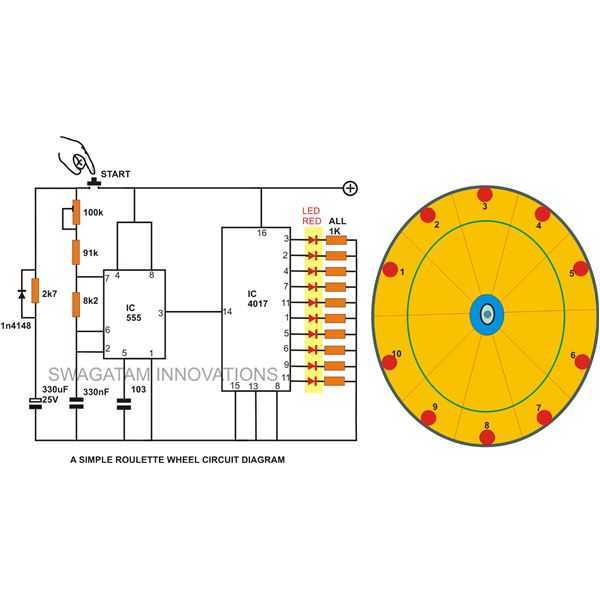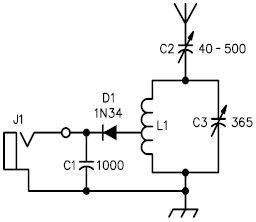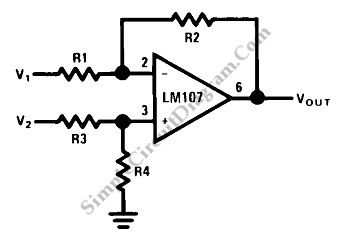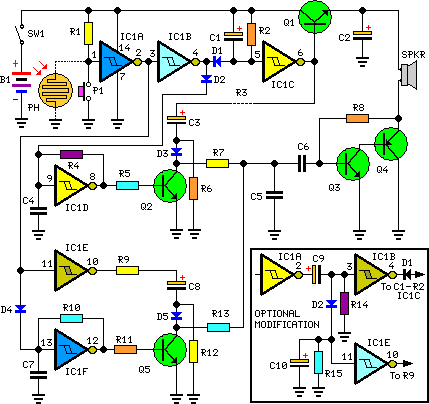
10 led simple roulette wheel circuit

A simple circuit for a 10 LED roulette wheel is presented. Pressing the button initiates the LEDs in a rotational sequence that starts at full speed and gradually decelerates until it halts at a randomly selected LED. The randomness of the selection is influenced by the duration the button is pressed, with even a 0.1-second variation capable of altering the final LED position, enhancing the reliability of the roulette application.
The circuit design for the 10 LED roulette wheel utilizes a microcontroller or a simple timer integrated circuit to control the sequencing of the LEDs. The core of the circuit comprises ten LEDs arranged in a circular pattern, each connected to a digital output pin of the microcontroller. A push-button switch serves as the input mechanism to start the LED sequence.
Upon pressing the button, the microcontroller activates a timer that dictates the speed of the LED sequence. Initially, the LEDs light up in rapid succession, creating the illusion of spinning. The timing algorithm implemented in the microcontroller gradually increases the interval between each LED activation, simulating a deceleration effect. This is achieved through a loop that adjusts the delay based on a predefined decrementing time variable.
The randomness of the final LED illuminated is determined by the duration the button is held down. A longer press results in a longer delay before the sequence stops, while a shorter press leads to a quicker halt. This feature can be implemented by measuring the time the button is pressed using an analog input or a timer interrupt. The microcontroller reads this duration and uses it to select a final LED position based on a calculated random index.
To enhance the foolproof nature of the roulette application, the circuit can incorporate debouncing logic for the push-button to prevent false triggering due to mechanical bounce. Additionally, the circuit can include a reset function to allow users to restart the sequence at any time.
Overall, this simple yet effective circuit design provides an engaging interactive experience, combining basic electronic components and programming techniques to create a functional roulette wheel simulation.A very simple 10 LED roulette wheel circuit is shown here. pressing the button starts the LEDs in a rotational motion (sequencing) at full swing initially, and gradually slows down, until it stops to a particular, randomly selected LED. The randomness of the selection depends upon the time for which the push remains switched ON by the finger.
Even a difference of 0. 1 second is able to change the position of the final LED position, making the rouletteapplicationhighly foolproof. 🔗 External reference
The circuit design for the 10 LED roulette wheel utilizes a microcontroller or a simple timer integrated circuit to control the sequencing of the LEDs. The core of the circuit comprises ten LEDs arranged in a circular pattern, each connected to a digital output pin of the microcontroller. A push-button switch serves as the input mechanism to start the LED sequence.
Upon pressing the button, the microcontroller activates a timer that dictates the speed of the LED sequence. Initially, the LEDs light up in rapid succession, creating the illusion of spinning. The timing algorithm implemented in the microcontroller gradually increases the interval between each LED activation, simulating a deceleration effect. This is achieved through a loop that adjusts the delay based on a predefined decrementing time variable.
The randomness of the final LED illuminated is determined by the duration the button is held down. A longer press results in a longer delay before the sequence stops, while a shorter press leads to a quicker halt. This feature can be implemented by measuring the time the button is pressed using an analog input or a timer interrupt. The microcontroller reads this duration and uses it to select a final LED position based on a calculated random index.
To enhance the foolproof nature of the roulette application, the circuit can incorporate debouncing logic for the push-button to prevent false triggering due to mechanical bounce. Additionally, the circuit can include a reset function to allow users to restart the sequence at any time.
Overall, this simple yet effective circuit design provides an engaging interactive experience, combining basic electronic components and programming techniques to create a functional roulette wheel simulation.A very simple 10 LED roulette wheel circuit is shown here. pressing the button starts the LEDs in a rotational motion (sequencing) at full swing initially, and gradually slows down, until it stops to a particular, randomly selected LED. The randomness of the selection depends upon the time for which the push remains switched ON by the finger.
Even a difference of 0. 1 second is able to change the position of the final LED position, making the rouletteapplicationhighly foolproof. 🔗 External reference





